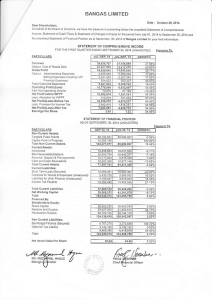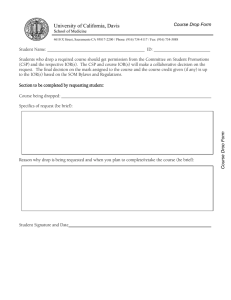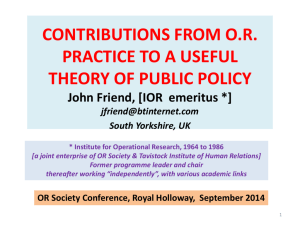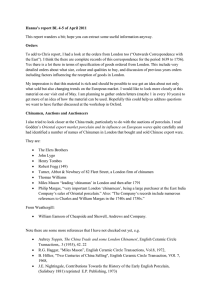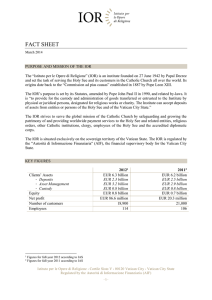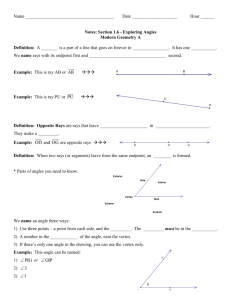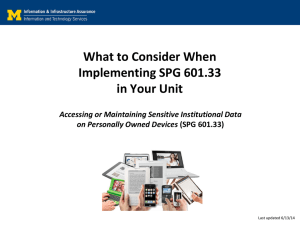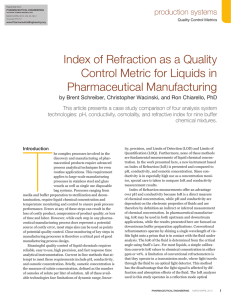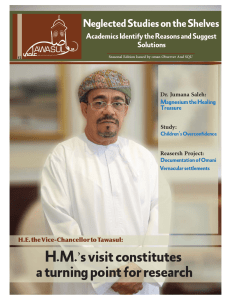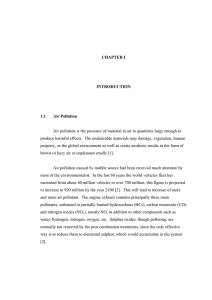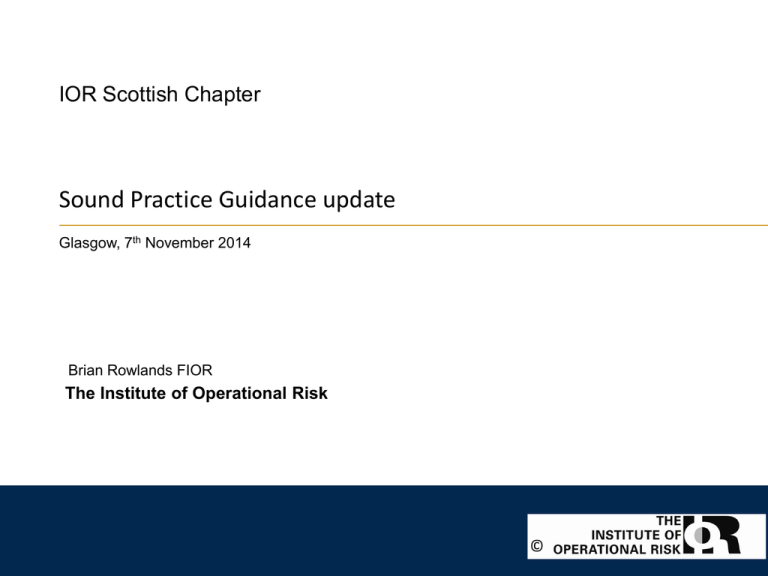
IOR Scottish Chapter
Sound Practice Guidance update
Glasgow, 7th November 2014
Brian Rowlands FIOR
The Institute of Operational Risk
©
Overview
2
• Introduction to Sound Practice Guidance
• Summary of current SPG papers
• Recently published – and planned
• Discussion
• Summary and conclusion
©
Introduction to Sound Practice Guidance
• Written by practitioners for practitioners
• Reflects current “sound” practice
• Built around the main elements of an operational risk
framework
• Only available (in full) to IOR members
©
3
Summary of current SPG papers
4
Internal and external environment
Drivers: Business strategy/objectives
Infrastructure
Governance
Appetite
Losses Int
Losses Ext
Past
Categorisation
Toolkit
KRIs
Culture
RCSA
Present
Scenarios
Future
©
Recently published…
5
Since last year’s Scottish Chapter conference we have published:
•A new paper on Risk Culture (November 2013)
•A new paper on Scenario Analysis (December 2013) and
•An updated Risk Control Self Assessment paper (May 2014)
©
Risk Culture
6
• Recognised as a key topic by financial institutions, professional
institutes and regulators
• But little clarity/guidance over what it is, how it it can be
assessed / managed
The structure of the SPG paper is
• Defining risk culture
• The significance of risk culture
• Internal and external factors that can affect risk culture
• Managing risk culture (including monitoring and assessment)
• Implementing an effective risk culture change process
©
Scenario Analysis
7
The outline of this paper is:
•Introduction: Objectives; Definitions, Examples of use,
Advantages and disadvantages
•Regulatory guidance – European and UK sources of reference
•Development methodology: Preparation; Assessment; Validation;
Reporting
•Sources of information: Expert judgement; RCSA; Internal loss
data; External loss data; Key Risk Indicators
•Embedding within a risk management framework: Interface with
risk appetite/tolerance; Risk mitigation; New business and new
products, Strategic planning
©
Planned…
8
Work in progress includes:
• An updated Key Risk Indicators paper, and;
• A new paper on Conduct.
Beyond that we expect to be addressing a new paper on Internal
Loss Events and are considering the subject of Risk Management
Effectiveness.
©
Conduct
9
Progress to date – a technical author has been identified who will
be guided by:
•A recent article published in the Operational Risk & Regulation
magazine, and;
•A draft outline, building on presentations delivered by the FCA.
©
Internal Loss Events?
10
• Perhaps one of the most important components of the
Operational Risk Framework?
• Elements of loss events
• Uses of loss data
• Practical challenges associated with implementation
©
Risk Management Effectiveness?
11
• Encompassing:
•
•
The Use Test and
“Comparative Analysis” (BCBS195 and BCBS292)
•
•
•
•
Integration of framework components
Why integration is important
Integration of information: outputs = inputs
Integration of function- how each framework component
contributes to “IMMR”
• Assessing “effectiveness” - development, implementation,
embedding - so what?
©
Any questions?
12
©
Exercise 1:
Suggestions for new SPG papers?
©
Exercise 2:
Which are the most important / urgent
topics for development?
©
Summary
15
• What we have achieved in this session
• Next steps
©
Conclusion
16
• The IOR in Scotland has been very well represented in
supporting the SPG papers published to date.
• But we are always looking for extra volunteers to assist in the
drafting of new papers.
• If you would like to make a contribution please contact the SPG
Lead Ariane Chapelle: achapelle@ior-institute.org
©
Disclaimer
The content of this document is the property of the Institute of Operational Risk (IOR). It is made
available on the understanding that no part of it shall be modified, copied, stored in a retrieval
system, or transmitted in any form, by any means or supplied to a third party without prior written
consent of the IOR.
Care and attention has been taken in the preparation of this document but the IOR shall not accept
any responsibility for any errors or omissions herein. Any advice given or statements or
recommendations made shall not in any circumstances constitute or be deemed to constitute a
warranty by the IOR as to the accuracy of such advice, statements or recommendations. The IOR
shall not be liable for any loss, expense, damage or claim arising out of the advice given or not
given or statements made or omitted to be made in connection with this document.
The IOR recognises copyright, trade marks, registrations and intellectual property rights of certain
third parties whose work is included or may be referred to in this document.
The content of this document does not constitute a contractual agreement with the IOR. The IOR
accepts no obligations associated with this document except as expressly agreed in writing. The
information contained in this document is subject to change. All rights reserved.
©

